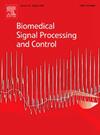Predicting the progression of mild cognitive impairment based on fine-grained and spatiotemporal features of MRI
IF 4.9
2区 医学
Q1 ENGINEERING, BIOMEDICAL
引用次数: 0
Abstract
Alzheimer’s disease is a significant neurodegenerative disorder that severely impairs cognitive function and behavior, making it the predominant cause of dementia worldwide. As a precursor state to AD, early diagnosis of Mild Cognitive Impairment (MCI) is critical for timely intervention and treatment. Current single time-point structural MRI (sMRI) analysis methods inadequately capture temporal evolution of neuropathological features and the hierarchical changes of brain structural. To address this limitation, we proposed MME-TransENet, a novel hybrid CNN-Transformer architecture, predicting the progression of MCI based on fine-grained and spatiotemporal features of MRI. The architecture synthesizes longitudinal sMRI data from dual temporal points and integrates three novel components: EFF-GCNet for local feature extraction capturing global dependencies, multi-scale attention mechanism modeling spatiotemporal feature interactions, and adaptive fusion of fine-grained pathological signatures. Evaluated on the ADNI dataset, MME-TransENet achieves state-of-the-art performance (84.74% accuracy, 0.8587 AUC), outperforming existing methods. Visualizations via Grad-CAM confirmed the focus of MME-TransENet on clinically critical regions and demonstrated its ability to learn spatiotemporal patterns of biomarker. This study demonstrates that longitudinal feature learning through multi-scale integration significantly enhances MCI diagnostic precision, offering a robust method for tracking neurodegenerative progression.
基于MRI细粒度和时空特征预测轻度认知障碍的进展
阿尔茨海默病是一种严重的神经退行性疾病,严重损害认知功能和行为,使其成为全球痴呆症的主要原因。轻度认知障碍(Mild Cognitive Impairment, MCI)作为AD的前兆,早期诊断对及时干预和治疗至关重要。目前的单时间点结构MRI (sMRI)分析方法不能充分捕捉神经病理特征的时间演变和脑结构的层次变化。为了解决这一限制,我们提出了MME-TransENet,一种新颖的混合CNN-Transformer架构,基于MRI的细粒度和时空特征预测MCI的进展。该架构综合了来自双时间点的纵向sMRI数据,并集成了三个新组件:ef - gcnet用于局部特征提取,捕获全局依赖关系,多尺度注意机制建模时空特征相互作用,以及细粒度病理特征的自适应融合。在ADNI数据集上进行评估,MME-TransENet达到了最先进的性能(准确率为84.74%,AUC为0.8587),优于现有方法。通过Grad-CAM的可视化证实了MME-TransENet对临床关键区域的关注,并证明了其学习生物标志物时空模式的能力。该研究表明,通过多尺度整合的纵向特征学习显著提高了MCI诊断的准确性,为跟踪神经退行性进展提供了一种稳健的方法。
本文章由计算机程序翻译,如有差异,请以英文原文为准。
求助全文
约1分钟内获得全文
求助全文
来源期刊

Biomedical Signal Processing and Control
工程技术-工程:生物医学
CiteScore
9.80
自引率
13.70%
发文量
822
审稿时长
4 months
期刊介绍:
Biomedical Signal Processing and Control aims to provide a cross-disciplinary international forum for the interchange of information on research in the measurement and analysis of signals and images in clinical medicine and the biological sciences. Emphasis is placed on contributions dealing with the practical, applications-led research on the use of methods and devices in clinical diagnosis, patient monitoring and management.
Biomedical Signal Processing and Control reflects the main areas in which these methods are being used and developed at the interface of both engineering and clinical science. The scope of the journal is defined to include relevant review papers, technical notes, short communications and letters. Tutorial papers and special issues will also be published.
 求助内容:
求助内容: 应助结果提醒方式:
应助结果提醒方式:


